The company, which has traditionally used reservation methods, is now looking to expand its business by creating online services. The goal is to provide new services, satisfy customers and provide services to partner agencies and respected travellers.
Design a user-friendly and efficient booking experience for an online travel and tourism business that caters to both first-time and repeat customers. The booking process should be seamless, allowing users to easily search for and compare different travel options, such as flights, trains, hotels and accommodations around the world. Additionally, the booking experience should take into account the various needs and preferences of different types of travellers, such as solo travellers, families, and business travellers. The solution should also include a way for users to easily view and manage their upcoming trips and reservations, and provide relevant information and recommendations throughout the booking process. Additionally, the service should help users select the desired location, provide accommodation, navigate to the hotel location and allow the users to edit the itinerary of their choice.
As a UX designer/researcher for this startup, my role was to lead the user experience design efforts and apply design thinking methodologies. My Activity included conducting user research, creating user personas and journey maps, prototyping and testing design solutions. I was responsible for planning and organising the creation of a UX team in the next phase of the project to ensure the success and scalability of the service.
To gather sufficient data at the initial stage, I employed various methods during the discovery phase's first step.
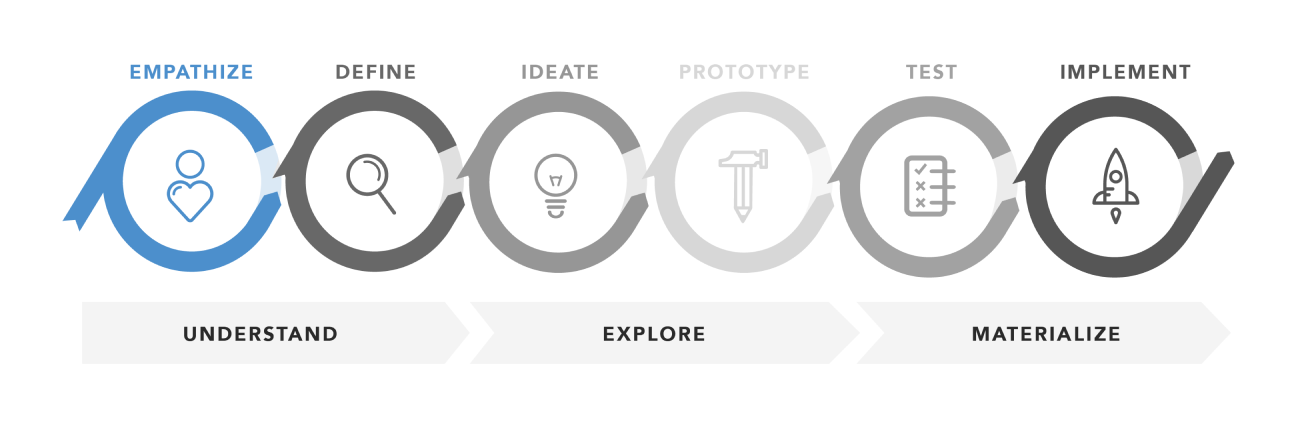
Goal: Establish the objectives and methods for gathering data in the field. The focus of data collection is to understand the process of purchasing plane, train and hotel reservations and identify any issues or problems that users may encounter while using the service in existing platform. This can be done by observing and tracking users' interactions with the web platform or mobile application and identifying their behaviours and actions.
Goal: Identify and understand the challenges and shortcomings that users face during the process of purchasing plane and train tickets and booking hotels. We aim to uncover what drives users to engage in online bookings and what factors contribute to their satisfaction with the service provided. Our research method will involve semi-structured interviews, which will include both our own pre-determined questions and open-ended prompts.
Goal: Gather information on stakeholder needs, requirements and expectations, and how the product or service aligns with them. Gain a better understanding of the overall market and industry. Identify stakeholder’s valuable insights to build a shared understanding of the problem and making better decisions.
Goal: Understand what motivates users to do their shopping online and stick to the product that provides them with the best service. The types of questions are determined in the form of a combination of several different types: multiple-choice questions with an open option for other items, a scale question to obtain the amount and degree of importance of the issue for users, a question to determine the user's priorities, and an open question to express other things that the user is interested to share with us.
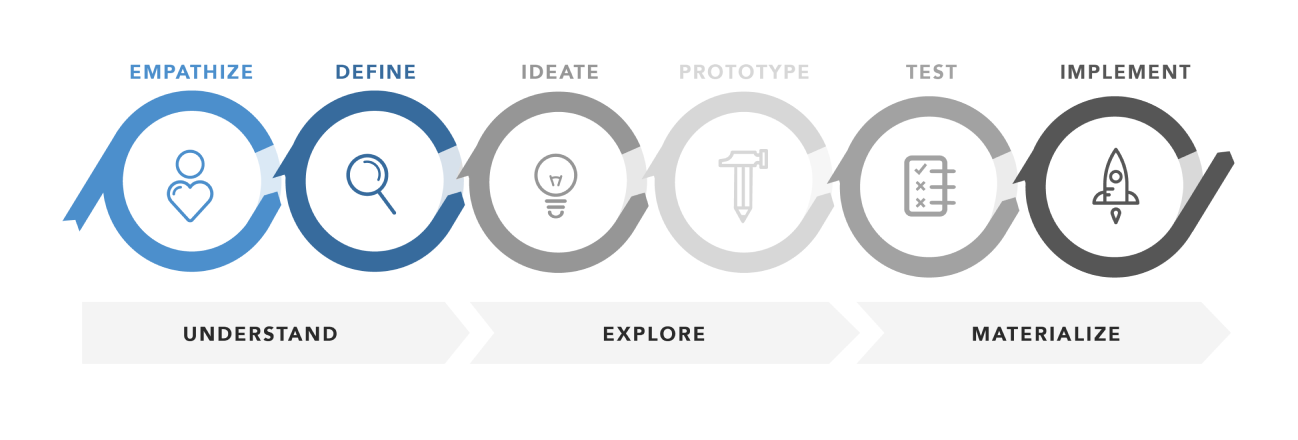
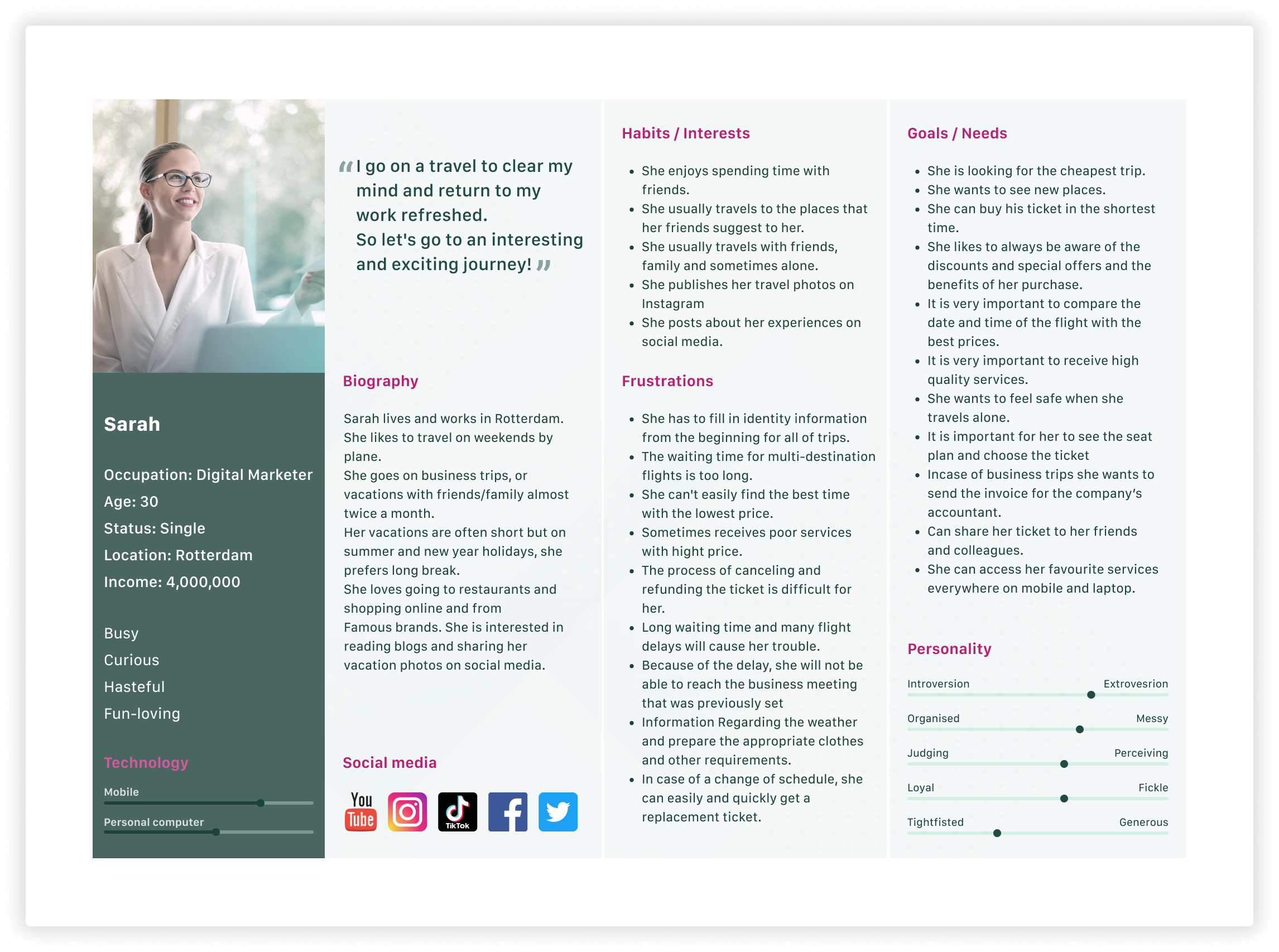
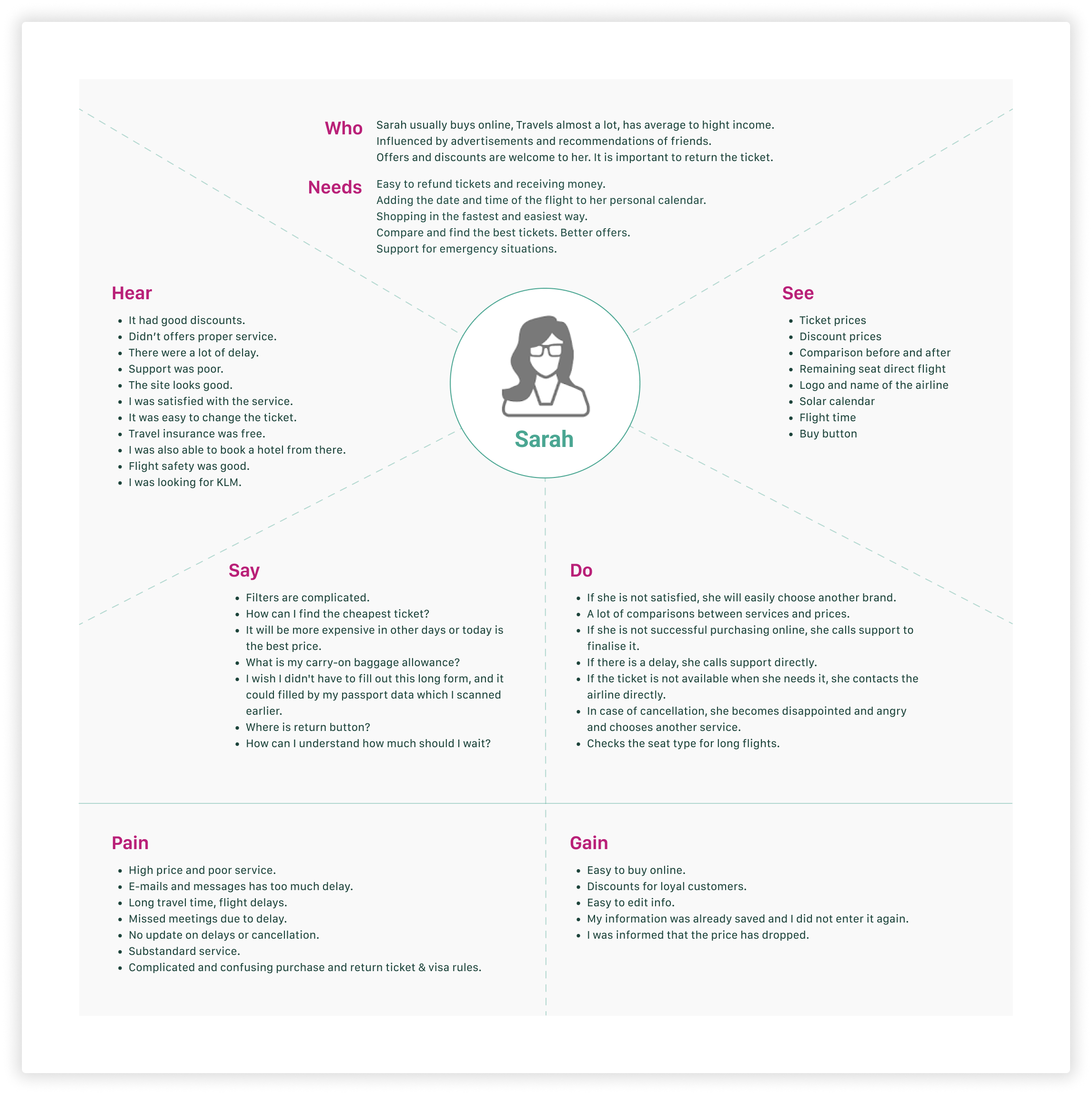
Goal: Buy a flight ticket from Rotterdam to Santorini.
Main Persona:Sarah
Scenario: Sarah is going to book a flight for a short vacation with her partner.
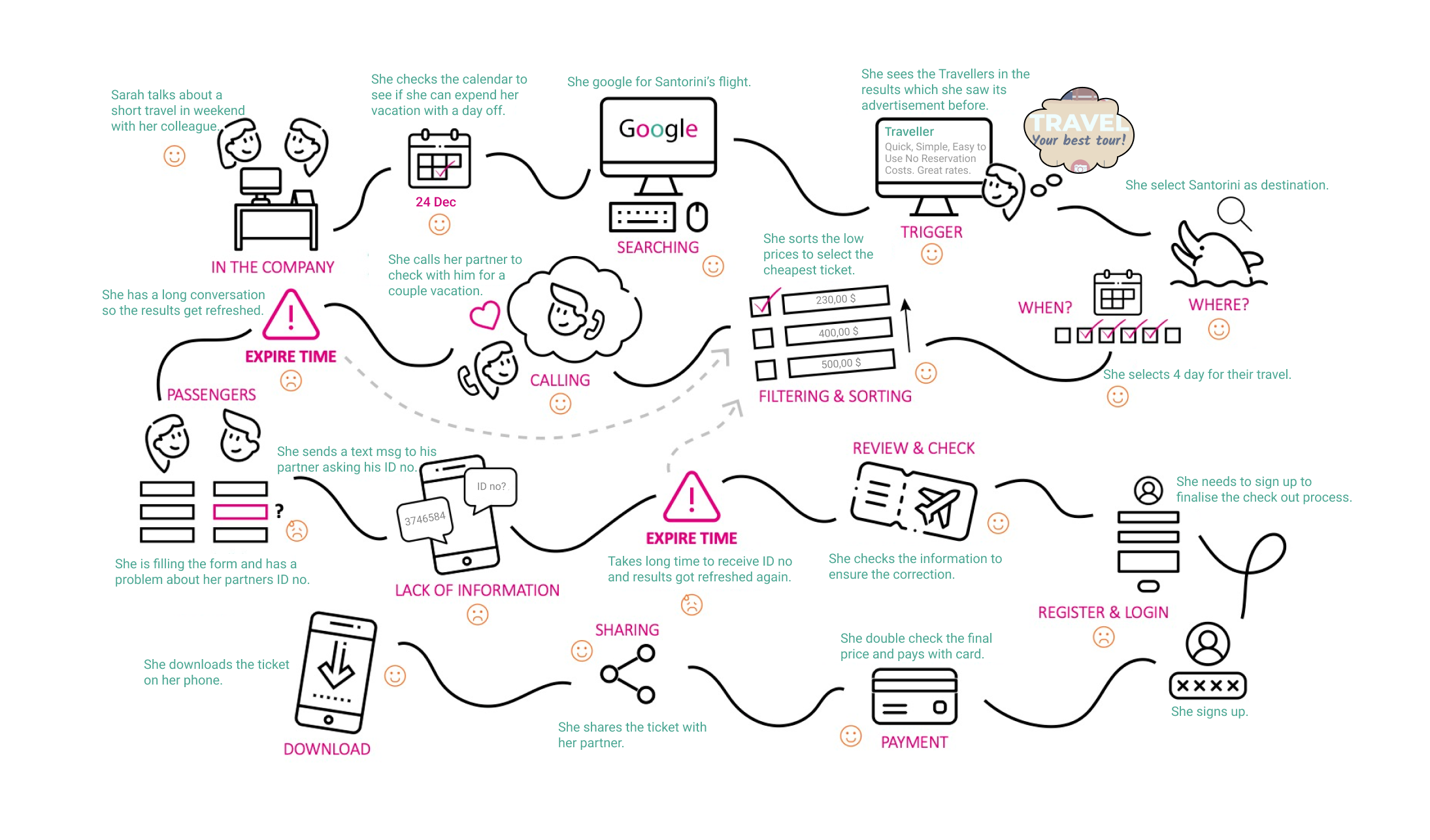
I achieved the sitemap by using the results of card sorting to organise the website's information architecture. The card sorting process allowed me to gather information on how users expect to find the content and how they would like to see it grouped. The end result was a sitemap that was user-centred and effectively communicated the website's organisation and content.
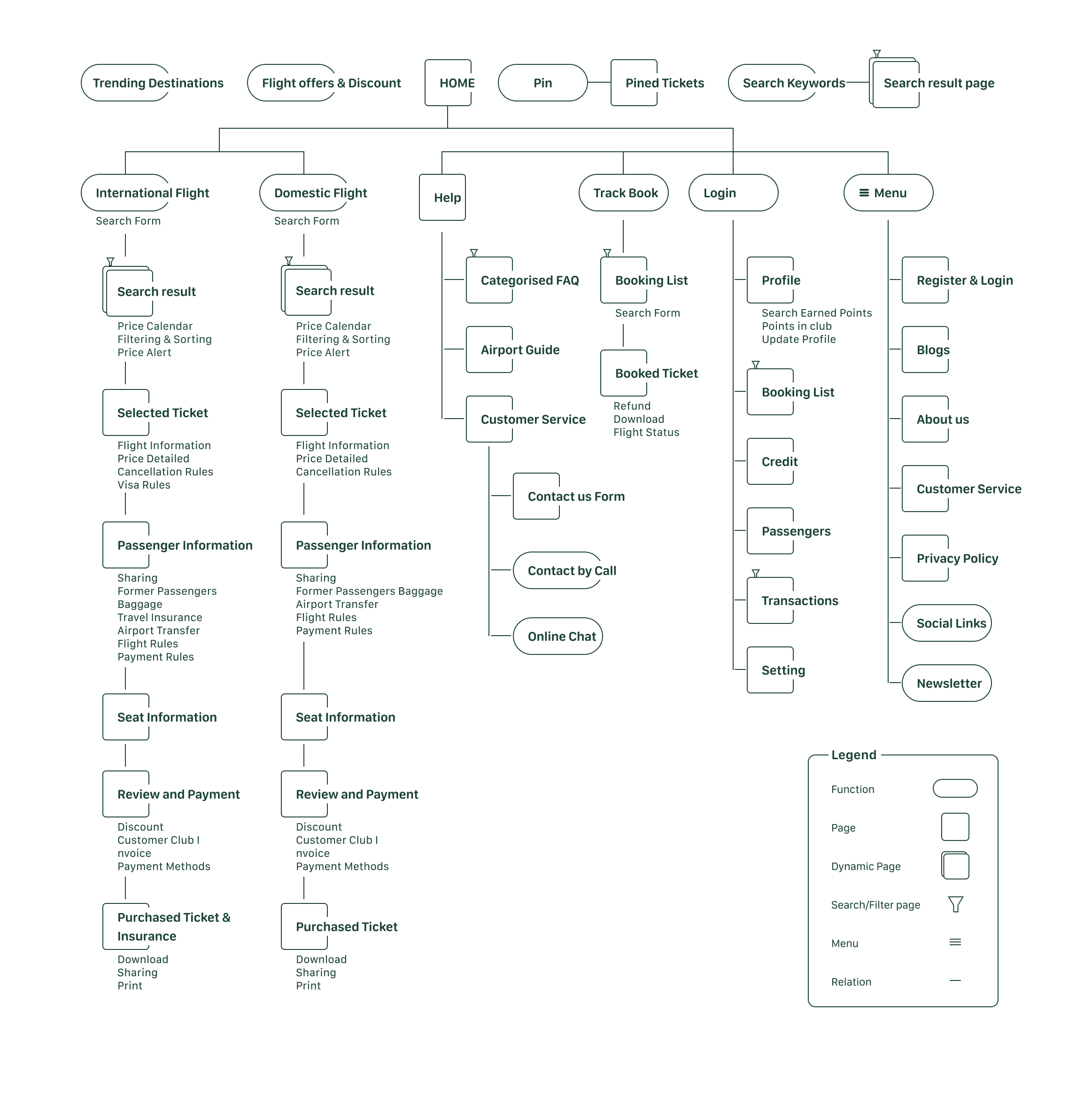
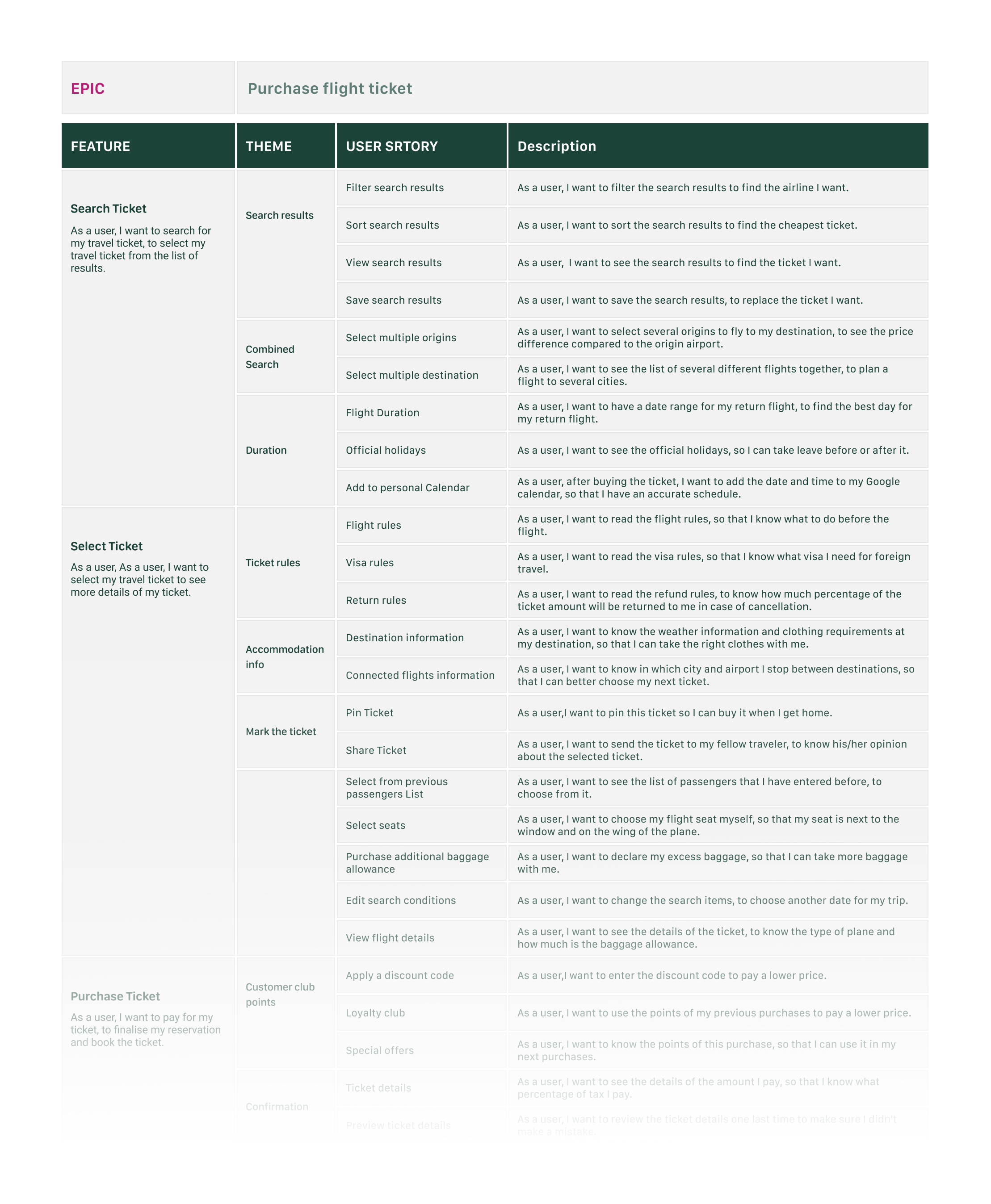
The use case diagram I created is a visual representation of the interactions between the users and the system. It includes actors representing the user personas, use cases representing the actions or interactions with the system, and associations showing the relationship between the actors and use cases. The diagram is designed to clearly demonstrate the different ways users can interact with the system and the outcomes of those interactions. It was created through research on user demographics, pain points, and desired outcomes, and it was reviewed to ensure it accurately reflected the project's requirements and goals. It will be reviewed and updated regularly throughout the project's lifecycle.
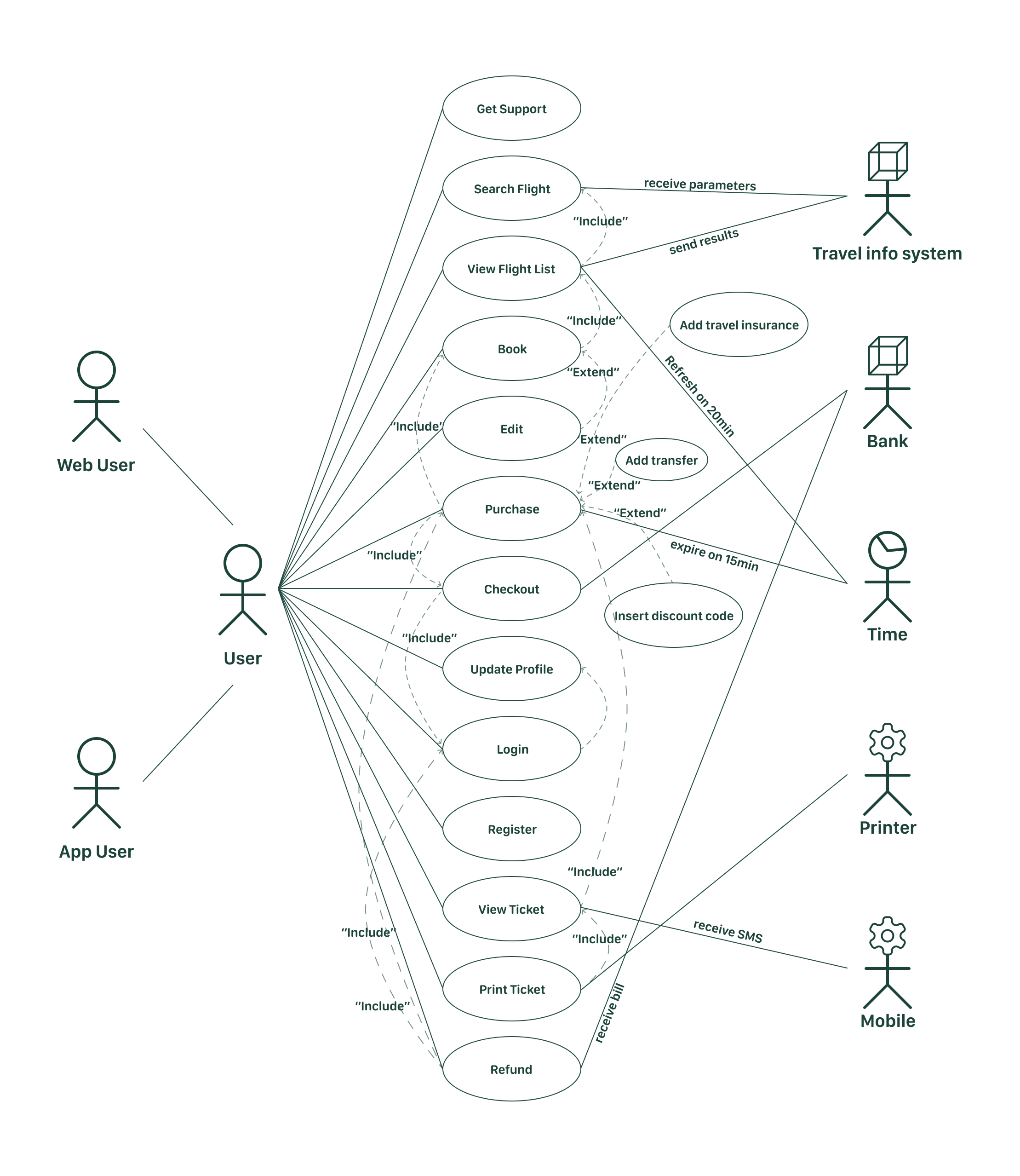
Due to the outbreak of COVID-19 and its impact on the tourism and travel industry, stakeholders have decided to cancel a project. The decision was made to halt the project in order to avoid further financial losses.
Despite this setback, the outcome of our efforts was the gain of valuable insights and understanding of user groups through successful and precise user research. Although we were unable to go further through the process we had planned, we are proud of the progress we made during the first stage of the project and are determined to use this knowledge to inform future endeavours.